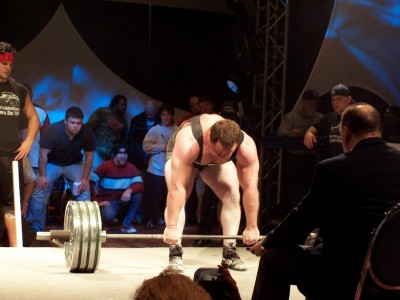Check out the “Mash Squat Every Day” E-Book with 4 twelve week programs for weightlifting, powerlifting, super total, and bodybuilding. Find out more below:
Whether you want to lose weight, gain weight, or get jacked, check out the “Mash Eat What You Want Program” for all of you Nutrition needs. Check it out today at the link below:
==> The Mash Eat What You Want Program
Join Team Mash Mafia for weightlifting, powerlifting, athletic performance, bodybuilding, running, or a hybrid approach. This team is already taking over weightlifting, and I plan on taking over all of the other disciplines one at a time. Check it out below:
Destroy Plateaus and Sticking Points with Isometric Contractions
There is no better way to breakthrough a plateau than using Isometric Contractions. Let me define an Isometric Contraction before we get too deep into the conversation. As Isometric Contraction is when the muscle tenses, but the length doesn’t change. Bruce Lee talked a lot about Isometric Contractions. He would press his hands together or against a wall to strengthen his muscles.
Most people center their training around concentric (Muscle contracts to shorten) and eccentric contractions (muscle lengthens) as well they should, but nothing recruits more fibers than Isometric Contractions. However, the massive amounts of fiber recruitment only strengthens the specific joint angle being worked, which is where a lot of people dismiss the training all together.
Once again you shouldn’t throw out the baby with the bath water. As Mel Siff stated in his book Supertraining:
“…isometric training also produces significant strength increase over a range of up to as much as 15 degrees on either side of the training angle. Moreover, as with all strength measurements, there is a specific force or torque versus joint angle curve for each type of muscle contraction, so that it is highly unlikely that a strength increase would be confined to a very precise angle and nowhere else in the range.”
As you can see here, not only are you strengthening the angle of the joint being worked, but you are also strengthening 15 degrees each way. Also he says that it is unlikely that it doesn’t strengthen the entire range of motion somewhat, so the bottom line is Isometric Contractions work for strength.
Charles Poliquin wrote about Isometric training years ago. I got a chance to work closely with him back in the late 90’s, which led me to try out some of his Isometric work. This led to some major gains in the bench press. Based on his recommendations, I used a power rack to perform Isometric Contractions at various joint angles of the bench press like 6” off the chest, 12” off the chest, and a few inches before lockout. I performed multiple sets, reps, and contractions at each section of the lift. It was a long but effective workout.
I would use this type of training to either breakthrough plateaus in training, or to strengthen sticking points that might be occurring during the lift. Here is a sample workout:
Isometric Powerlifting
Weeks 1-3
Squat
Bottom to 6″ 3×5 5 second holds
6″ to 12″ 3×5 5 second holds
12″ to 18″ 3×5 5 second holds
Bench
Chest to 4-6″ 3×5 5 second holds
4-6″ to 10-12″ 3×5 5 second holds
10-12″ to 2″ before lockout 3×5 5 second holds
Deadlifts
Floor to 2-4″ 3×5 5 second Holds
2″ to Knee 3×5 5 second holds
Knee to 2″ before lockout 3×5 5 second Holds
Weeks 4-5
Squat
Bottom to 6″ 3×3 8 second holds
6″ to 12″ 3×3 8 second holds
12″ to 18″ 3×3 8 second holds
Bench
Chest to 4-6″ 3×3 8 second holds
4-6″ to 10-12″ 3×3 8 second holds
10-12″ to 2″ before lockout 3×3 8 second holds
Deadlifts
Floor to 2-4″ 3×3 8 second Holds
2″ to Knee 3×3 8 second Holds
Knee to 2″ before lockout 3×3 8 second Holds
Weeks 6-7
Squat
Bottom to 6″ 3×3 5 second holds
6″ to 12″ 3×3 5 second holds
12″ to 18″ 3×3 5 second holds
Bench
Chest to 4-6″ 3×3 5 second holds
4-6″ to 10-12″ 3×3 5 second holds
10-12″ to 2″ before lockout 3×3 5 second holds
Deadlifts
Floor to 2-4″ 3×3 5 second Holds
2″ to Knee 3×3 5 second Holds
Knee to 2″ before lockout 3×3 5 second Holds
This is a great off-season workout for anyone. Almost any exercise can be used, but I chose the big 3 squat, bench, and deadlift. You could use the same system for Snatch Pulls, Clean Pulls, Standing Presses, or any other movement that might assist Olympic weightlifters. You perform one of these exercises per day with maybe one or two assistance movements afterwards. One exercise is 9 sets all by itself, so you won’t have a lot of time or desire to do a lot of work afterwards.
Obviously you will need a power rack with two sets of safety pins (one to hold the weight and one to press against). I recommend starting on the lighter side and gradually working up. The key is to pick a weight that you can keep pressed against the pins the entire time. If the weight is moving on and off the pins during the 5-8 second contraction, then it’s no longer an isometric contraction.
Have fun with this workout, and let me know the results. I would stay with this program 3-7 weeks. It’s written for 7 weeks. If you have a long enough off-season, then I would definitely perform the entire 7 weeks. If you have a sticking spot that won’t go away, then fix it with Isometric Contractions. It’s the fastest and easiest way.
Remember on September 17th-18th we will be hosting the Mash Barbell Picnic” on the Farm. Weightlifting Day 1 and Powerlifting Day 2, but more importantly hanging out together the entire weekend. Check it out below:
